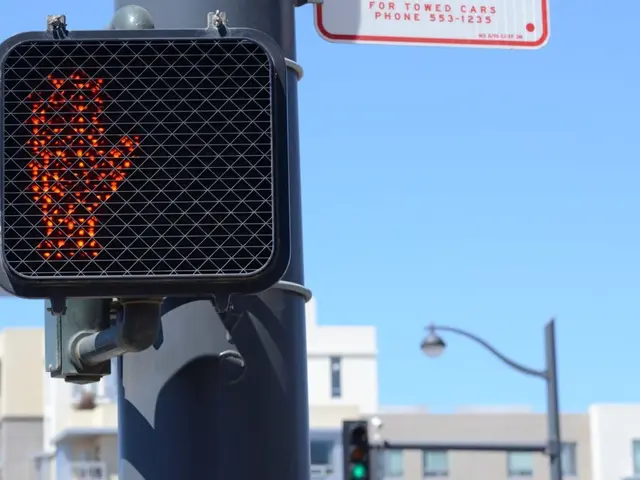The Increasing Epidemic of Shoplifting in England and Wales: Unpacking theSurge
Increased burglaries at record stores in England and Wales
In the bustling streets of England and Wales, shoplifting has become an alarming trend, reaching unprecedented heights. With alarming statistics from the Office for National Statistics (ONS), the year ending March 2025 saw a staggering 517,000 shoplifting incidents recorded by police, marking a 20% rise from the previous year[1]. But the real numbers paint a much grimmer picture, as per the retail industry body, British Retail Consortium (BRC). Unreported incidents may increase the actual figure to about 20 million instances, a chilling revelation.
In its stark reality, shoplifting is no longer confined to petty theft but has evolved into an epidemic across the UK. The situation has worsened post-COVID-19 pandemic, with escalating records year after year. In London supermarkets, it's now commonplace to witness thieves making away with cartloads of goods without a second glance from the staff or security personnel[2].
Understanding the Shoplifting Surge
Economic Stressors
The COVID-19 pandemic and its aftermath have brought about an array of economic challenges, such as inflation and rising living costs. Many individuals struggling with these pressures might resort to shoplifting as a desperate means to cope[1].
Ineffective Prevention Strategies
Despite significant investments by retailers in security measures such as CCTV and deterrents, shoplifting persists as a significant issue. This suggests that current prevention strategies may not be delivering the intended results[1].
Organized Crime
Organized shoplifting gangs have proliferated, capitalizing on the ease of resale through online marketplaces. These groups exploit the potential profits, incentivizing the activity[1].
Behavioral Changes
Changes in consumer behavior and the rise of online markets make stolen goods easier to sell, potentially attracting more individuals to participate in shoplifting[1].
Reporting Practices
The increase in reporting and awareness may play a role in the higher numbers, as more incidents are documented and included in official statistics[1].
Post-COVID-19 Landscape
Post-pandemic shifts in societal norms, economic stress, and consumer behavior contribute to setting the stage for this surge in crime. The easing of lockdown restrictions provides more opportunities for theft, while economic uncertainty may heighten desperation levels[1].
In essence, shoplifting in England and Wales has multiplied due to a mix of economic pressures, ineffective security measures, potential alterations in reporting practices, and societal upheavals in the post-COVID-19 world[1][2].
[1] Overall: Why Shoplifting in England and Wales Has Seen a Significant Increase
[2] Policing: Shoplifting in the UK: Why it’s Spiking During the Pandemic
- The community in England and Wales is grappling with an increasing trend of shoplifting, as indicated by the 517,000 recorded incidents in the year ending March 2025, constituting a 20% surge from the previous year [1].
- A general-news article from EnrichmentData.com reveals that shoplifting has evolved from petty theft to an epidemic, largely due to economic pressures stemming from the COVID-19 pandemic and its aftermath [1].
- Despite implementing vocational training programs [2], the UK government might need to reevaluate its community policy, taking into account the rising issue of shoplifting and its intertwining with economic stressors, ineffective prevention strategies, organized crime, behavioral changes, and reporting practices [1][2].
- The decrease in job opportunities during the pandemic, paired with a surge in online marketplaces for stolen goods, could be contributing factors in worsening the shoplifting epidemic across Wales and England, thus warranting a rethink on vocational training initiatives targeting hard-hit communities post-pandemic [1].





